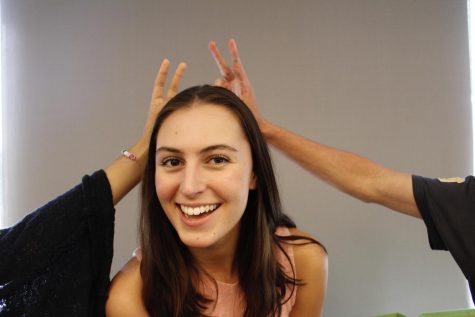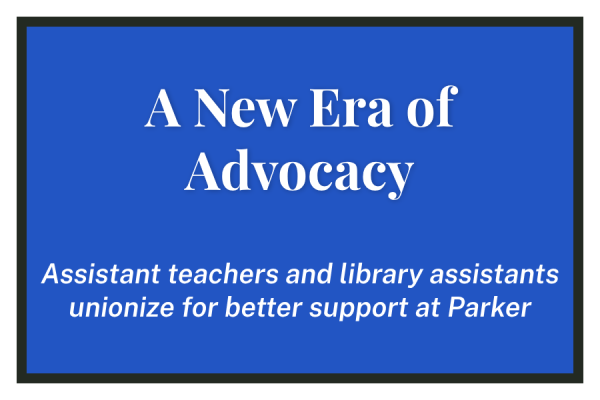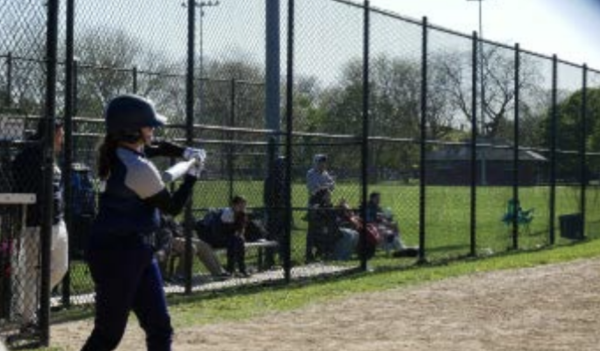A New Spin on Shakespeare
How Battle of the Bard is Bridging a Gap Between Centuries and Communities
At 8:00 a.m. on October 22, loud music filled Kenwood Academy’s auditorium. Rows of mostly empty seats filled the space. A sign that hung over the stage spelled out “Battle of the Bard.”
Over time parents, teachers, and student supporters shuffled in. The once quiet auditorium steadily grew louder.
When everyone settled in, a third of the auditorium was full. Manon Spadaro, Parker graduate, past Parker drama teacher, and the Founding Artistic Director of Chicago Youth Shakespeare, and Marilyn Halperin, the Education Director at Chicago Shakespeare Theater, welcomed everyone to the preliminary bout.
The Preliminary Bout at Kenwood Academy was one of three. Senn High School and Oak Park and River Forest High School hosted the other two.
Battle of the Bard is an annual Shakespeare competition for teenagers across Chicago. Students represent their school in the competition by acting out scenes from Shakespeare plays in front of a panel of judges.
Spadaro started the Battle in March 2013. She said, “I wanted kids to have an opportunity to work together and create something from Shakespeare that spoke to them and they could relate to.”
Out of the ten teams that were at each Preliminary Bout, only the top two moved on to the “Final Bout,” in which the winning teams competed on November 14 at the Shakespeare Theater for a grand prize of $1,000. The teams that advanced from Kenwood Academy were Mundelein and Kenwood Academy.
Bonnie Seebold and Cory Zeller, Upper School English teachers, who helped start the Parker Battle of the Bard team this year and aided the students in rehearsal process.
The Parker team consisted of sophomores Ashley O’Toole, Beatrice Turner, and Christian Navas, as well as junior Kaden Florsheim.
For the first round of the Battle, many teams presented scenes from MacBeth, Hamlet, and Romeo and Juliet. Parker performed a scene from Twelfth Night.
“We wanted to do something that was not-so popular,” Seebold said. “The scene we chose had five people in it, so we had to edit it to get rid of one of the characters. After editing, we kept on rehearsing.”
When Parker performed their scene, the crowd showered the team with snaps and laughter. The scene set itself apart with a short song sung by Turner called “O Mistress Mine,” an element that no other teams’ scenes had.
After the performance, a group of judges scored the scene – on a scale from one to ten – with four 8.5’s and an 8.6, which was above average.
The second round of the Battle was different. Instead of performing one scene, the teams could make their own Shakespeare “mashups” using scenes from different plays. Schools used their own experiences to come up with clever ideas such as Shakespeare “Bachelor” and “Tinder,” a dating app.
Parker pulled scenes from four different plays to create their mash-up, choosing to focus on love and kissing. In their melange, two characters are talking when another actor claps twice, making the characters in the scene freeze. From there, the actor taps an actor in the scene performing and takes his or her spot. When they resume, they are in a whole new scene.
“We started with love scenes, and then came up with the idea of characters being in love, and then in a second they’d be kissing each other and dying,” Seebold said. “We thought it would be clever.”
Smiles spread across people’s faces as they gazed up in interest at the stage and laughed at the scenes. The mashup scored two eights, an 8.1, 8.2, and a 9.2.
This is the third Battle of the Bard. “About ten schools participated in the first Battle of the Bard, which was hosted in Parker’s own auditorium,” Seebold said. “This year there are around 40 teams competing. It’s definitely become more ‘official’.”
Spadaro and Halperin stressed that Battle of the Bard was not solely created for students to learn more about Shakespeare. “It’s so much about building community,” said Spadaro, “having a great time together, and celebrating and honoring each other’s work.”
Spadaro adds that she hopes that participants feel empowered by bringing Shakespeare’s work to life.
“It’s about bridging gaps and getting rid of boundaries and finding ways for kids to be a part of something bigger than themselves, and to feel that amazing sense of empowerment, that yes, we’ve learned about Shakespeare, we performed it, but we also shared this experience with people we never would’ve come in contact with otherwise,’” Spadaro said. “That shared community is a big piece of what Battle of the Bard is about.”







